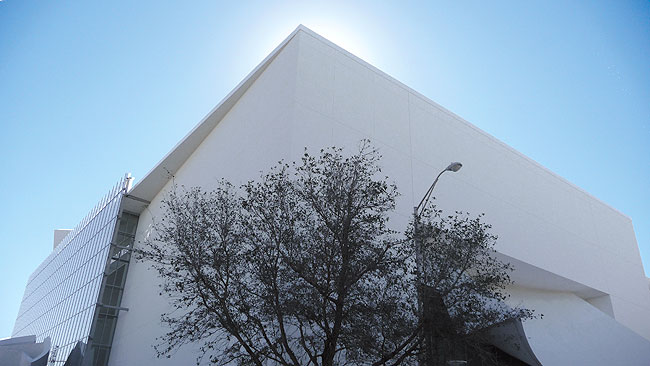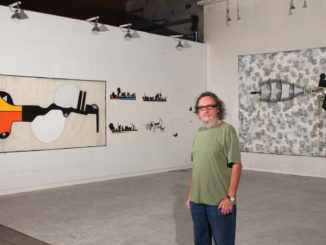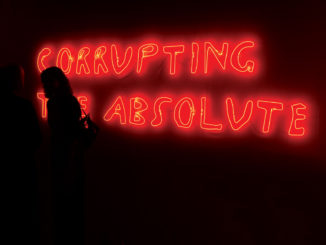 It had been home since 1988 and had served them well enough, but in January 2011, the New World Symphony moved out of the Lincoln Theater and relocated to a new facility that boasts state-of-the-art luxuries and futuristic capabilities. The New World Center, as this multi-building venue is called, is located at 500 17th Street on Miami Beach, adjacent to Lincoln Road and the Lincoln Theater. As befitting its new residents, it comes with a very impressive pedigree. Craig Hall, the vice president of communications for NWS, wants students to team up with every possible patron: “What we hope to achieve … is to serve our geographic community and engage people to become part of a worldwide music community.”
It had been home since 1988 and had served them well enough, but in January 2011, the New World Symphony moved out of the Lincoln Theater and relocated to a new facility that boasts state-of-the-art luxuries and futuristic capabilities. The New World Center, as this multi-building venue is called, is located at 500 17th Street on Miami Beach, adjacent to Lincoln Road and the Lincoln Theater. As befitting its new residents, it comes with a very impressive pedigree. Craig Hall, the vice president of communications for NWS, wants students to team up with every possible patron: “What we hope to achieve … is to serve our geographic community and engage people to become part of a worldwide music community.”
The New World Symphony was founded by the internationally renowned composer-conductor Michael Tilson Thomas, who intended it to be not simply another music school but an academy that would offer further training to professional musicians. Limiting itself to no more than thirty-five new students a year – around ninety for the three-year program – NWS puts them through a curriculum that teaches advanced music studies along with skills such as leadership and public speaking. Personal presentation is also part of the requirements, which enable graduates to step into any top-level position in any musical enterprise, from simple choral ensembles to full-blown orchestras. Tilson Thomas wants graduates to become community leaders and mentors for classical music, and bring its appeal to younger patrons, especially those from different cultures.
Tilson Thomas’ fellows needed a new facility that would mirror their sensibilities – those of being flexible, progressive, and youthful. He also wanted a building that would serve multiple purposes: performance hall, educational institute, cultural destination, and Miami Beach icon. So he turned to his childhood friend, the acclaimed architect Frank Gehry, to design it. Gehry, one of modern architecture’s more provocative and controversial artists, has made no secret of his disdain for most modern design. “Ninety-eight percent of buildings are boxes, which tells me that a lot of people are in denial. We live and work in boxes,” he recently told Playboy magazine. “People don’t even notice that,” he said. “Most of what’s around us is banal.”
Tilson Thomas and Gehry wanted the campus to be a bold, fresh statement that would both reflect and generate innovative ideas, and thus began a decade-long project to bring forth their architectural gem. It began in January 2001 when the City of Miami Beach and Miami-Dade County took a plot of land and agreed to make it over. They engineered a public-private partnership that raised nearly $155 million, a quarter of it in government funds. An underused area would be turned into a new mixed-use public venue, with some of its design ideas being inspired by Chicago’s Millennium Park. The entire site would be Miami Beach’s new cultural and educational nexus.
The NWS’s campus has a concert hall, rehearsal/practice rooms, faculty lounges, offices, and student areas, such as storage lockers and classrooms – all Gehry designed. On one side is a parking garage, designed by Gehry Partners, LLP, which can accommodate 557 vehicles. On the other is the two and one-half acre Lincoln Park. With plans in place and monies collected, the developers broke ground in January 2008 on their new urban center.
The campus is nearly 101,000 square feet of innovative design and high-tech multi-media functionality, but a most un-Gehry exterior greets patrons: the basic configuration for the building is that of a … box. A glass box. Gehry started at the entrance with a straight, eighty-foot-high clear glass wall that leads to a six-story geometric atrium. The garage connects to this atrium, which has the feel of a tunnel opening up to a large, airy space. Making the wall out of glass gives patrons the opportunity to see the interior design from the outside. It also affords visitors the chance to watch students as they perform or rehearse and feel as if they’re involved in the making of the music. “In addition”, says Tilson Thomas, “The whole building is designed to break out members of the orchestra to give them a chance to become a personality.”
A 7,000 square feet exterior projection wall allows video presentations, such as live concerts from inside the building or specially made videos, to be screened for the public on the street. Robotic cameras placed all around the campus can provide a continuous video feed for “wallcasts,” many of which will be free.
Next to the entrance are a high-tech box office and a bar, open to the public, which has Gehry’s signature design: an undulating canopy – this one in iridescent blue-green titanium. The high-tech details continue in the thirty-odd rooms and studios, where cable connections allow one-on-one tutorials, recording sessions, and webcasts on a global basis: Guest lecturers can conduct class from anywhere in the world. The campus is wired with 17 miles of fiber-optic cable to allow for next-generation Internet2 transmissions.
The campus exterior had to blend in with its environment, specifically that of Miami Beach’s unique architecture. It’s inside the hall, however, where Gehry’s genius becomes evident. The 30,000 square feet interactive concert hall, which was acoustically designed by Yasuhisa Toyota of Nagata Acoustics, features huge, sonically reflective, curving “sails” that surround the 757 audience members. These sails also act as screens, so any image or light source can be projected onto them. The main stage has ten separate risers, adding to flexibility in performance. Four smaller stages encircle the main stage and also offer multiple variations on retractable round seating and staging. The seat farthest from the main stage is only thirteen rows away, so patrons will be surrounded by digital music and visuals.
On top of the performance hall is a 7,950 square feet rooftop garden designed by Raymond Jungles, which has a reception area, virtual music library, and lounge. It’s a large, relaxing space that can accommodate over 200 guests. Large planters were built into the structure in the initial stages of construction and designed to carry the weight of mature Gumbo Limbo and Pitch Apple trees. Both specimens were chosen because they’re native to this area and hurricane resistant. They provide much-needed shade for outdoor festivities and performances. The garden encourages people to create and explore within a shaded, living environment.
Lincoln Park, next door to the campus, was designed by the Dutch landscape architecture firm West 8. The space inside the park has been integrated with the technology of the school, so videos and performances can be enjoyed from within the park itself. To make it as much of an oasis as possible, it’s been planted with palms, bougainvillea, and Royal Poincianas, and is dotted with comfortable seating and pergolas. Live Oaks have been planted along peripheral areas, also for shade. These trees were chosen and placed strategically to allow the park and the adjoining areas to be organic, natural looking, and lush.
To celebrate the opening of the New World Center, NWS scheduled six days of performances and galas for various guests starting on Tuesday, January 25. The Grand Opening Ceremony acknowledged donors, trustees, and civic officials who gathered for the formal dedication, after which there was the premiere of a video mural by filmmaker Tal Rosner and digital artist Casey Reas shown onto the exterior projection wall. On Wednesday, January 26, and Friday, January 28, Tilson Thomas conducted the orchestra in a performance of Aaron Copland’s dynamic Third Symphony. There was also the world premiere of a new work commissioned by the NWS by British composer Thomas Adès and a second video-art presentation by Rosner that was created specifically to take advantage of the center’s new curved projection surfaces. The Los Angeles Philharmonic and the San Francisco Symphony joined in via video.
On Thursday, January 27, Tilson Thomas conducted the orchestra, the University of Miami Symphonic Choir and Frost Chorale, and several soloists in A Schubert Journey, a program that featured various compositions by Franz Schubert. The three-part performance was an hours-long live “wallcast.”
Saturday’s Grand Opening Gala on January 29 and Sunday’s performances on January 30 featured dining al fresco and premiere recitals, many of which were turned into multi-media events. The NWS Orchestra performed Mussorgsky’s Pictures at an Exhibition while students and recent graduates from the University of Southern California School of Cinematic Arts debuted eleven short videos. The opening ceremony on January 25 and the concerts on January 27 and 28 were free of charge.
What Michael Tilson Thomas and Frank Gehry have achieved with the New World Center is unique and laudable. They’ve married that most traditional art form – classical music – to the most advanced multi-media technology. In doing so, they’ve set the bar for growth and experimentation in music performance, education, and community participation in South Florida.



Be the first to comment